BECOME A STAKEHOLDER AND OWN YOUR HEALTHCARE
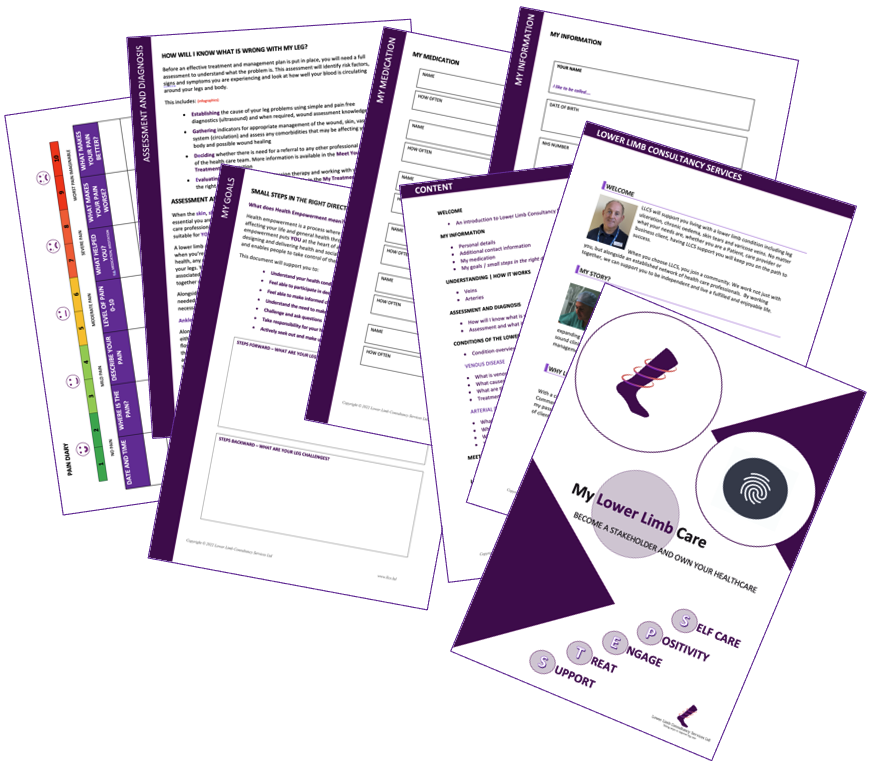
PATIENT INFORMATION
Patient support and education should begin as early as possible in order to empower them to care for themselves and improve patient outcomes. Involving patients, carers and family members can help them understand the core principles behind effective lower limb management and be more adherent to the overall long term treatment plan.
As clinicians, we can tend to forget how the patient with leg challenges must feel. Many patients will have feelings of fear and uncertainty, depression, reduced self image and social isolation. Providing ongoing education throughout their journey, while keeping the patient or caregiver involved, will help support them to become a stakeholder and decision maker in their short and long term care.
The COVID-19 pandemic forced a long overdue focus on self and shared care in the treatment and management of the lower limb. Self-care is also a key driver for the NHS and is part of the NHS Long Term Plan encouraging patients and carers to take an active role in managing their health and well being. LLCS offer a range of patient information in a handy guide called ‘My Lower Limb Care’. This can be tailored for individual groups to align with local services and/or industry providers.
For more information, please see the self and shared care section…
INTRODUCING ‘MY LOWER LIMB CARE’

Educational documents such as ‘My Lower Limb Care’ puts the patient at the heart of available services and support. You can’t embrace what you don’t understand and managing a medical condition can be challenging if the fundamental elements are not understood. Alongside how the lower limb works, how it breaks and how we fix it, this document also includes information on the wider healthcare team, available treatment options and diary inputs such as goals, challenges and a pain diary. This easy to understand document can be a useful reference and communication tool for the patient, their carers/family, alongside the multidisciplinary team who may become involved in their journey.
WHAT’S INCLUDED?
MY INFORMATION
Personal Details
Additional contact information
My medication
My leg goals and challenges – small steps in the right direction
UNDERSTANDING HOW IT WORKS
THE VEINS
THE ARTERIES
ASSESSMENT AND DIAGNOSIS
HOW WILL I KNOW WHAT IS WRONG WITH MY LEGS?
ASSESSMENT AND WHAT IT TELLS YOU
CONDITIONS OF THE LOWER LIMB
CONDITION OVERVIEW
WHAT IS VENOUS DISEASE?
WHAT CAUSES VENOUS DISEASE?
WHAT ARE THE SYMPTOMS OF VENOUS DISEASE?
TREATMENT – OVERVIEW
WHAT IS ARTERIAL DISEASE?
WHAT CAUSES ARTERIAL DISEASE?
WHAT ARE THE SYMPTOMS OF ARTERIAL DISEASE?
TREATMENT – OVERVIEW
MEET YOUR HEALTHCARE TEAM
ROLES AND RESPONSIBILITIES OF THE WIDER HEALTHCARE TEAM
LOWER LIMB ULCERATION
WHAT ARE VENOUS LEG ULCERS?
MY TREATMENT
WHAT IS COMPRESSION?
HOW DOES COMPRESSION WORK?
WHAT ARE THE BENEFITS OF COMPRESSION?
WHEN DO I HAVE TO WEAR COMPRESSION?
WHAT ARE RTHE OPTIONS AVAILABLE?
WHAT ARE THE RISKS?
CORRECTIVE THERAPY
SELF AND SHARED CARE SUPPORT
PAIN DIARY
A USEFUL TOOL TO HELP RECORD AND MONITOR PAIN, INCLUDING:
DATE AND TIME
WHERE IS THE PAIN?
DESCRIBE YOUR PAIN
LEVEL OF PAIN USING A VISUAL ANALOGUE SCALE OF 0-10 (VAS)
WHAT HELPED YOU?
WHAT MAKES THE PAIN WORSE?
WHAT MAKES THE PAIN BETTER?
MY SUPPORT
SUPPORT AND EDUCATIONAL NETWORKS FOR PATIENTS, CARERS AND FAMILY MEMBERS
NOTES AND QUESTIONS
A USEFUL AREA FOR PATIENTS, CARERS, FAMILY MEMBERS TO MAKE NOTES, ASK QUESTIONS AND DOCUMENT PROGRESS. THIS CAN ALSO BE A GOOD COMMUNICATION TOOL FOR WHEN A PATIENT ATTENDS ANOTHER HEALTH SERVICE (e.g. GP, Podiatry, or emergency care)
CONTENT EXAMPLE

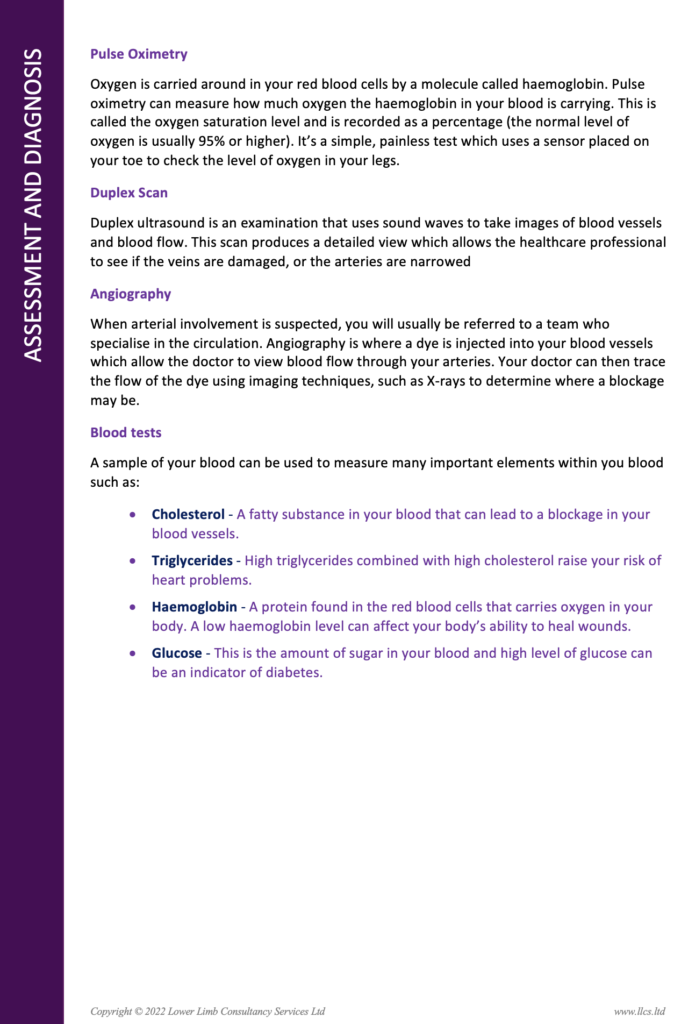
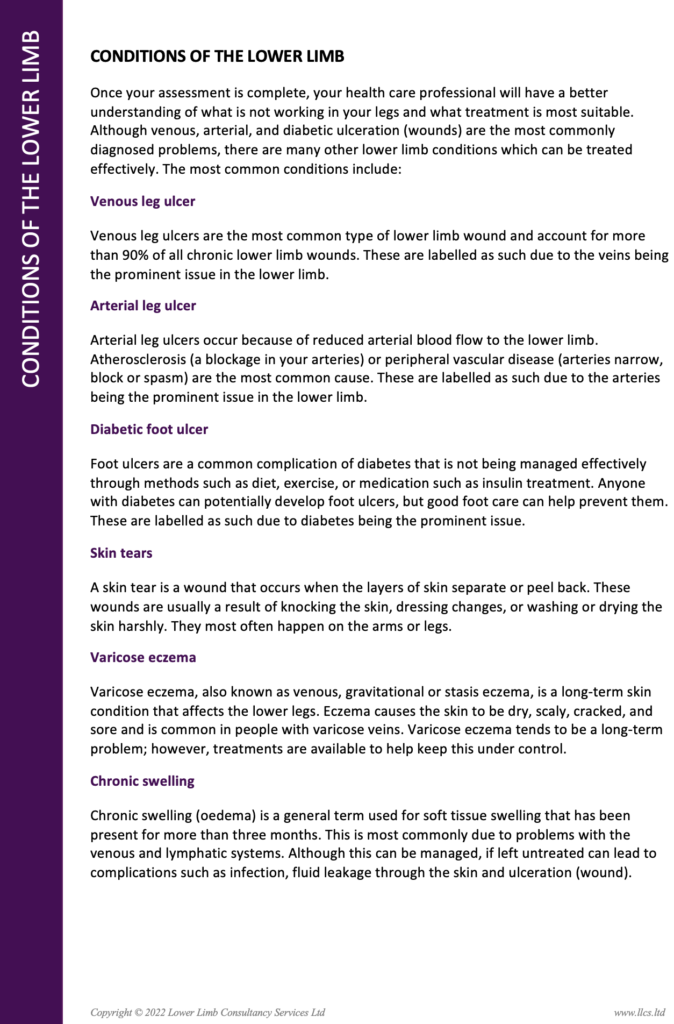
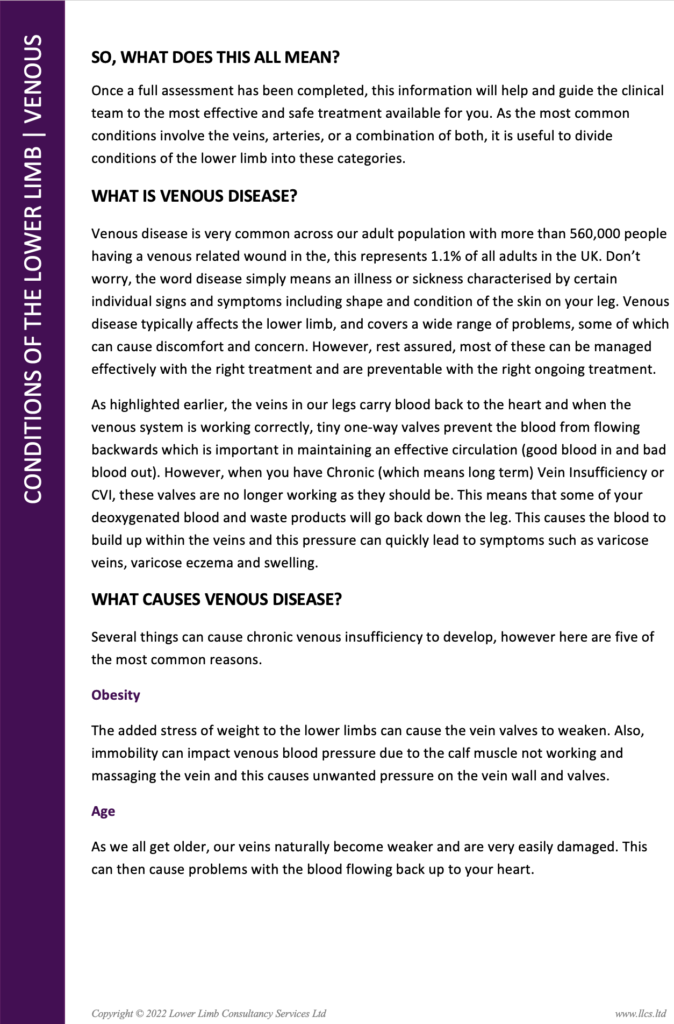
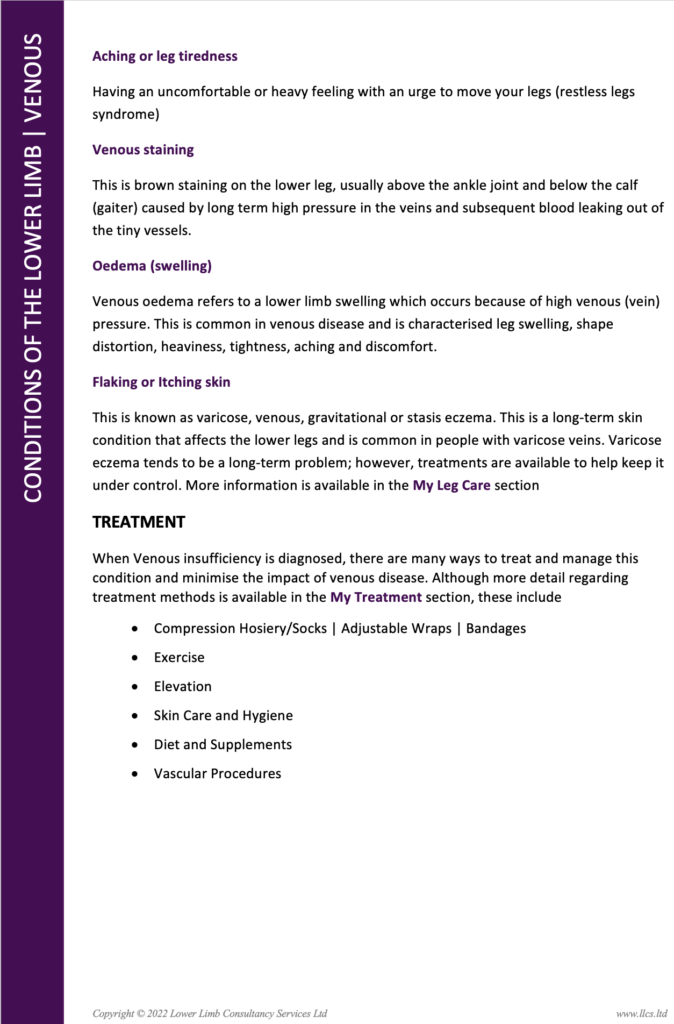
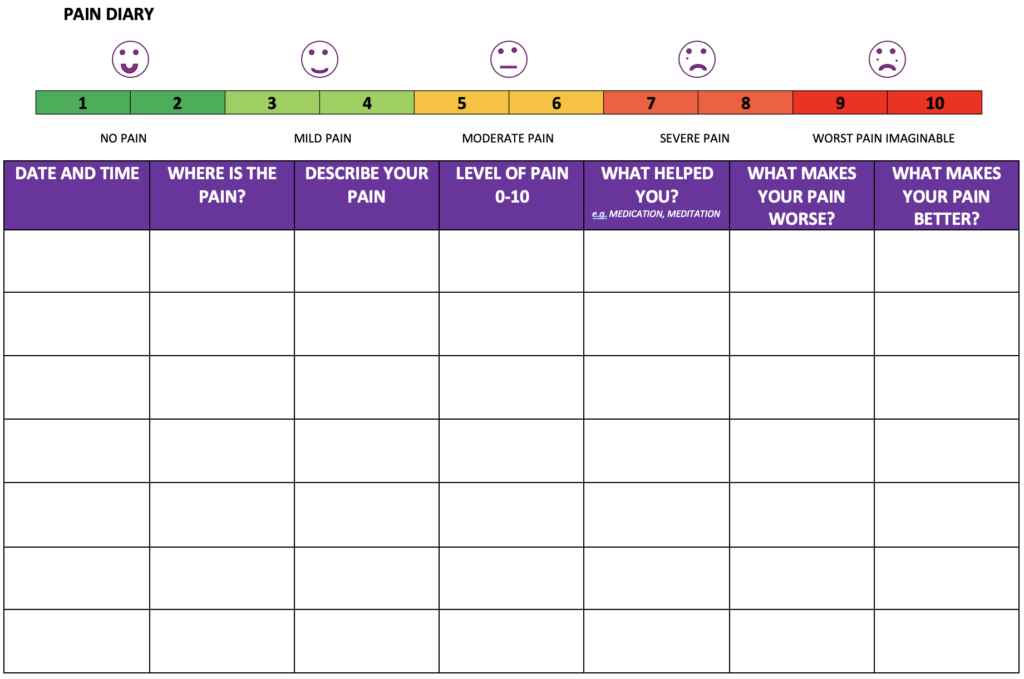
Next steps…
If you would like more information about how LLCS can help you deliver clear and effective patient education, don’t hesitate to contact us.
